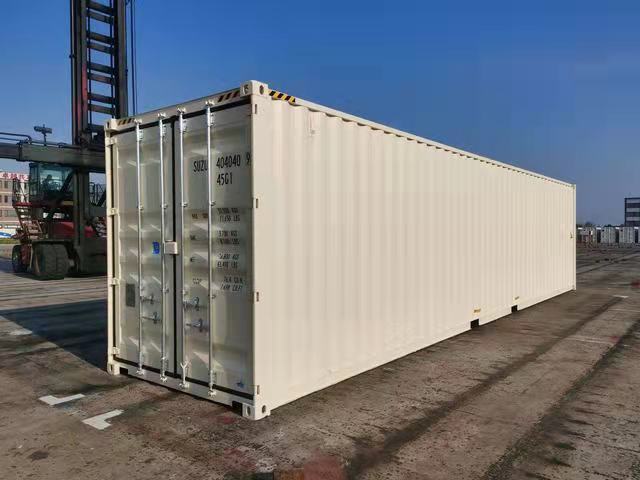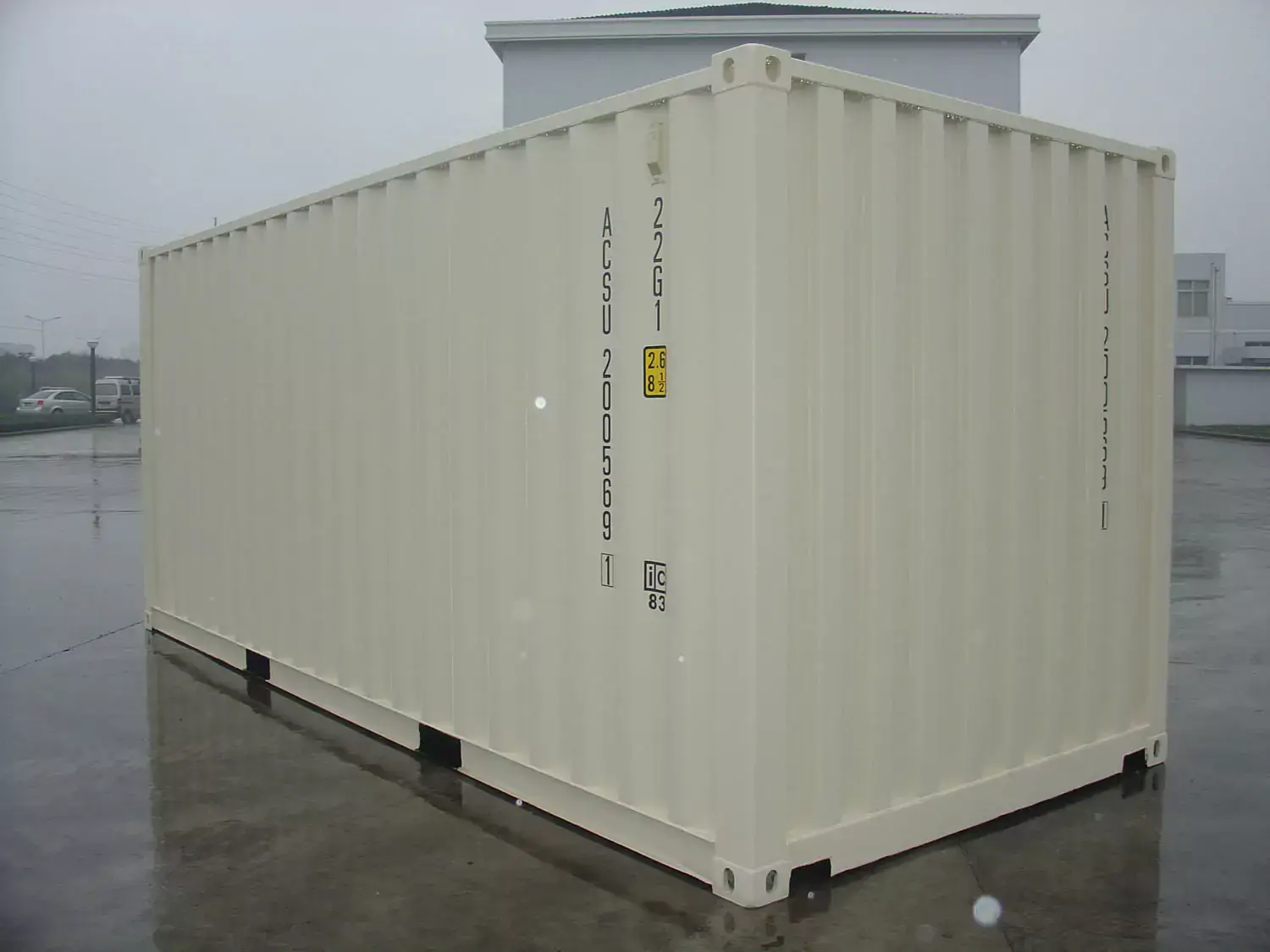How to Buy New Shipping Container 40 x 8 x 9.6 for a Trendy Mobile Office
How to Buy New Shipping Container 40 x 8 x 9.6 for a Trendy Mobile Office
Blog Article
The Ultimate Overview to Selecting the Right Shipping Container for Your Requirements
When it comes to picking the best delivery container, recognizing your certain requirements is important. You'll want to think about factors like dimension, type, and product to ensure you make the most effective selection. From basic sizes to specialized choices, there's a great deal to explore. And also, budgeting for both the container and any modifications can make a large distinction. Let's break down the essential elements to help you find the ideal suitable for your requirements.
Recognizing Delivery Container Sizes
When you're picking a shipping container, comprehending the numerous dimensions available is vital for making the right choice. Shipping containers typically come in basic sizes of 20 and 40 feet, however you'll also discover various other measurements. Understanding the size you require depends on what you plan to store or transport.If you're moving smaller things, a 20-foot container may be perfect, while larger deliveries commonly need a 40-foot container. The height can likewise vary; high cube containers supply additional vertical area, which can be beneficial for taller goods.Before determining, gauge your freight, and think about just how much area you'll need for packing and dumping. Constantly variable in possible future needs-- deciding for a somewhat larger container might conserve you trouble down the line. Eventually, picking the ideal dimension will certainly boost performance and ensure your products are secure throughout transit
Kinds Of Delivery Containers Available
There are a number of types of delivery containers readily available, each created for details objectives and cargo requirements. The standard completely dry container is functional, ideal for basic cargo. If you're delivering perishable products, take into consideration a refrigerated container, which maintains a controlled temperature. For oversized things, high cube containers supply added height, accommodating taller loads.If you require to deliver hefty machinery or tools, flat rack containers provide a sturdy base without wall surfaces. Meanwhile, open-top containers enable easy loading of tall freight, with a detachable tarpaulin covering for protection. If you're trying to find adaptability, take into consideration a collapsible container that can be easily kept when not in use.Lastly, specialized containers like storage tank containers are used for liquids, while vented containers are made for bulk cargo that requires air flow. Recognizing your freight type will certainly assist you pick the best container to fulfill your delivery needs effectively.
Product Considerations for Resilience
When picking a shipping container, the product plays an essential function in its toughness. You'll wish to consider the advantages of steel versus aluminum, particularly regarding deterioration resistance. Recognizing these variables can aid you make a much more educated option for your delivery requires.
Steel vs. Aluminum Containers
Just how do you select in between steel and aluminum containers for your delivery needs? Beginning by considering sturdiness. Steel containers are robust and offer superb stamina, making them perfect for hefty lots and harsh problems. They stand up to damage from impacts and are often more economical, which can be a major element for budget-conscious buyers.On the various other hand, light weight aluminum containers are light-weight, which can conserve you on delivery prices. They're easier to maneuver and are a great selection if you require to move products often. Light weight aluminum is typically much more pricey and less durable than steel. Weigh your certain needs meticulously, consisting of weight, expense, and the type of freight you'll be delivery, to make the best choice for your situation.
Deterioration Resistance Elements
Selecting the right material doesn't just include weight and cost; rust resistance plays a considerable duty in longevity. When choosing a shipping container, consider the atmosphere it'll encounter. Steel containers, while solid, can corrosion otherwise appropriately dealt with. Seek options with safety coatings or galvanization to boost their life expectancy. Aluminum, on the other hand, provides all-natural deterioration resistance, making it ideal for seaside areas or moist conditions. It can be much more pricey. Additionally, analyze the container's usage-- if it'll be subjected to chemicals or rough weather, focus on products that can endure these conditions. Buying a corrosion-resistant container currently can conserve you from costly fixings or replacements down the line. site web Pick wisely for long-term benefits.
Modifications and Personalization Options
Delivering containers aren't simply for moving goods; they can be transformed to satisfy your particular requirements via different modifications and customization choices. You can convert a basic container into a comfy office space, a short-lived retail shop, or perhaps a personal fitness center. The possibilities are almost endless.Think about including windows, insulation, or air flow to enhance comfort. You could also think about electrical wiring, pipes, or perhaps customized shelving to enhance functionality. If protection's a problem, reinforced locks can offer peace of mind.For aesthetic charm, you can repaint the container or include an one-of-a-kind layout to make it stand out. Don't neglect regarding floor covering alternatives-- whether you want resilient plywood or something much more advanced, it can boost the space.Ultimately, tailoring your shipping container to match your demands can boost functionality and produce an unique environment that mirrors your style.
Assessing Your Transport Demands
When it comes to using your customized delivery container, comprehending your transport needs is key. Begin by establishing what you'll be shipping-- whether it's hefty devices, retail items, or personal products. Each sort of freight has various demands pertaining to size, weight, and accessibility.Next, think about the range and setting of transportation. Are you shipping in your area, across the country, or worldwide? This affects the container's style and performance. If you're utilizing trucks, ensure your container fits basic measurements for simple loading and unloading.Additionally, consider transit conditions. Will your things need unique defense from weather condition or temperature level fluctuations? If so, you could need insulation or ventilation functions in your container.Lastly, assess exactly how frequently you'll be transferring products. Regular shipments may call for a more sturdy and versatile container to satisfy recurring demands. By dealing with these variables, you'll be well-prepared to select the ideal delivery container for your needs.
Budgeting for Your Delivery Container
Establishing an allocate your shipping container is basics important for guaranteeing a smooth purchasing process. Initially, figure out exactly how much you can afford to invest. Maintain in mind that rates can vary considerably based upon dimension, condition, and type. New containers generally cost much more, yet utilized ones can provide substantial savings.Next, think about any additional costs you could sustain, such as transportation fees, shipment charges, and adjustments. If you plan to customize the container, aspect in those expenses also. Research different suppliers to compare rates and locate the ideal deal that satisfies your needs.Don' t forget to consist of any permits or laws that might put on your purchase and use of the container. By plainly detailing your budget, you'll be much better prepared to make enlightened decisions, ensuring you get the right container without breaking the financial institution.
Maintenance and Take Care Of Long life
To guarantee your delivery container lasts for several years, regular upkeep is key. Start by examining the exterior for corrosion, damages, and damages. If you identify Learn More Here any concerns, address them right away to avoid additional deterioration. Tidy the container occasionally, both in and out, to get rid of dirt, debris, and moisture that can result in corrosion.Ensure the doors secure appropriately and oil the hinges to stay clear of rust and sticking. If you're utilizing the container for storage space, think about including air flow to minimize moisture and mold development. For extra security, use a rust-inhibiting paint or sealer annually.If your container's located in a rough atmosphere, like seaside locations, you could need to enhance maintenance frequency. Keep an eye on the floor covering, too; any kind of indications of wear ought to be fixed as soon as possible. With these simple actions, you'll extend the life of your shipping container significantly.
Regularly Asked Inquiries
Just how Do I Find a Reputable Delivery Container Vendor?
To discover a trustworthy shipping container vendor, start by investigating on the internet testimonials, requesting recommendations from friends or industry contacts, and comparing prices. Constantly check their qualifications and assurance they offer top quality containers that meet your needs.

Can I Rent a Delivery Container Instead of Purchasing?
Yes, you can absolutely lease a delivery container as opposed to getting one. Lots of vendors provide rental alternatives, which can conserve you money and provide flexibility if you just require it for a short duration.
What Permits Are Required for Container Placement?

Are Delivery Containers Weatherproof and Ideal for Outdoor Storage Space?
Yes, delivering containers are generally weatherproof, designed to hold up against severe conditions. Their durable building keeps your things safe and secure and dry, making them appropriate for outside storage space. Simply assure correct air flow to stop moisture accumulation inside.
How Do I Carry a Delivery Container When Bought?

Report this page